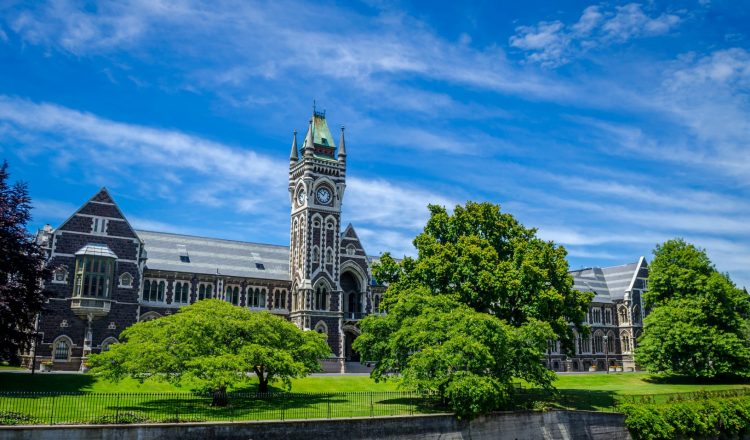어디에서 공부할까
이 질문에 대한 대답은 좀 어렵습니다. 뉴질랜드에는 한국과 같이 특출한 교육구가 없기 때문인데 따라서 유학 지역을 선택할 때에는 여러가지 사항들을 고려해야 합니다. 대부분의 유학원들은 오클랜드를 추천하지만 또다른 선택지도 있습니다.
학년에 따라
대학교와 같은 고등교육기관에 입학하려고 한다면 유학 지역은 그 학교가 위치한 곳에 한정됩니다. 고등교육기관이 가장 많은 도시는 오클랜드이며, 오클랜드 대학교는 뉴질랜드에서 가장 큰 고등교육기관이기도 합니다. 그렇지만 다른 도시에도 대학교와 폴리텍 등이 있습니다.
만약 초중등학생이라면 그 선택폭이 더욱 넓어집니다. 뉴질랜드 교육부(NZQA)에서 학교를 관리 감독하므로 전국 어느 학교든 관계없이 비슷한 수준의 교육을 받을 수 있습니다.
언어 및 문화 체험
학생들의 목표가 뉴질랜드 문화를 배우는 것이라면 유학생이 많지 않은 도시로 가는 것이 합리적입니다. 이 경우 오클랜드는 최선의 선택이 아닐 수 있습니다. 왜냐하면 전체 유학생의 80%가 오클랜드를 선택하는데, 이로 인해 때로는 중국과 인도의 언어와 문화가 뉴질랜드 색채보다 더 강하기 때문입니다.
초중등학생(초등/2차교육) 대부분은 오클랜드에 있는 학교에 많이 입학하고 그 다음으로 웰링턴과 해밀턴에 많은 학생들이 분포합니다.
고등교육(3차교육) 차원에서는 더니든과 파머스톤 노스와 같은 도시에 비교적 적은 수의 유학생들이 있습니다.
여유로운 삶을 꿈꾼다면
뉴질랜드의 거의 모든 곳에서 뉴질랜드만의 여유로운 일상을 즐길 수 있습니다. 다만 오클랜드의 경우, 가게들이 즐비해 있는 국제 도시이기 때문에 한국의 여느 도시와 큰 차이를 못느낄 수도 있습니다. 뉴질랜드만의 새로운 라이프스타일을 경험해보고 싶다면 다른 지역을 염두에 두는 것도 좋은 방법입니다.
취업까지 생각한다면
대학교와 같은 고등교육기관(3차교육기관)에 다니는 학생들이라면 졸업 후 취업에 대한 걱정이 많습니다. 오클랜드는 아무래도 도시 규모가 크기 때문에 취업도 쉬을 것이라는 인식이 있지만 현실은 다를 수 있습니다.
첫째, 오클랜드에서 공부하는 많은 학생들은 대부분 평균을 웃도는 고급 수준의 영어와 뉴질랜드 문화에 대한 높은 이해를 가지고 취업 시장에 나섭니다.
둘째, 소규모 지방의 경우 학생들이 회사 경영진들과 네트워크를 쌓거나 직접 만날 수 있는 기회가 더 많습니다. 즉, 졸업하기 전이라도 기업인들과 인맥을 만들 수 기회가 종종 있습니다.
마지막으로, 이러한 지역일수록 경쟁률이 현저히 낮습니다. 거점 도시에 위치한 많은 회사들에는 이력서가 넘쳐나지만, 지방에 위치한 회사일수록 적합한 구직자가 없어서 어려움을 겪기도 합니다.
적성에 맞춰보세요
자신의 관심사에 따라 학교와 지역을 선택하는 것이 무엇보다 중요합니다. 예를 들어 농업 기술 분야에서 공부하고 싶다면 관련 자격증을 딸 수 있는 학교인지를 먼저 확인하고 농업 기술 분야와 밀접한 네트워크를 구성하고 있는지 등을 더불어 체크한다면 좋습니다.
소득십분위에 따른 지역
특히 고등학생을 뉴질랜드로 유학 보내려는 학부모들 사이에서 가장 흔히들 오해하는 부분은 소득십분위 지역이 교육의 질과 동일하다는 여기는 것입니다. 그러나 사실은 그렇지 않습니다.
소득십분위는 말그대로 1부터 10까지의 소득 분포를 의미하며 인근 지역의 소득치까지 포함합니다. 예를 들어 최하 십분위(1) 학교는 가난한 지역에 위치하고 최상 십분위(10) 학교는 부유한 지역에 있습니다.
그러나 뉴질랜드의 십분위 시스템은 정부가 어느 학교에 더 많은 투자를 해야하는지 식별하기 위한 수단으로 만들어졌습니다. 부유한 지역의 학교는 지역 내에서 기부받을 기회가 상대적으로 더 많기 때문에, 최하 십분위 학교가 정부로부터 훨씬 더 많은 기금을 받게 됩니다.
이는 역설적으로 낮은 십분위 학교일수록 높은 십분위 학교보다 더 나은 시설과 투자를 받게된다는 것을 의미합니다.
학군
유학생들에게 학군이 크게 의미있는 건 아니지만 국내 학생으로 등록하는 경우라면 고려해봐야 합니다.
한국과 마찬가지로 뉴질랜드 학군은 지리적 위치에 따라 지정되며 해당 지역에 거주하는 학생들이 먼저 인근 학교로 배정받게 됩니다.
만약 특별히 입학하고자 하는 학교가 있다면 그 학군 밖에 거주하는 학생이라도 입학을 신청할 수 있지만 반드시 들어갈 수 있다는 보장은 없습니다.

















































